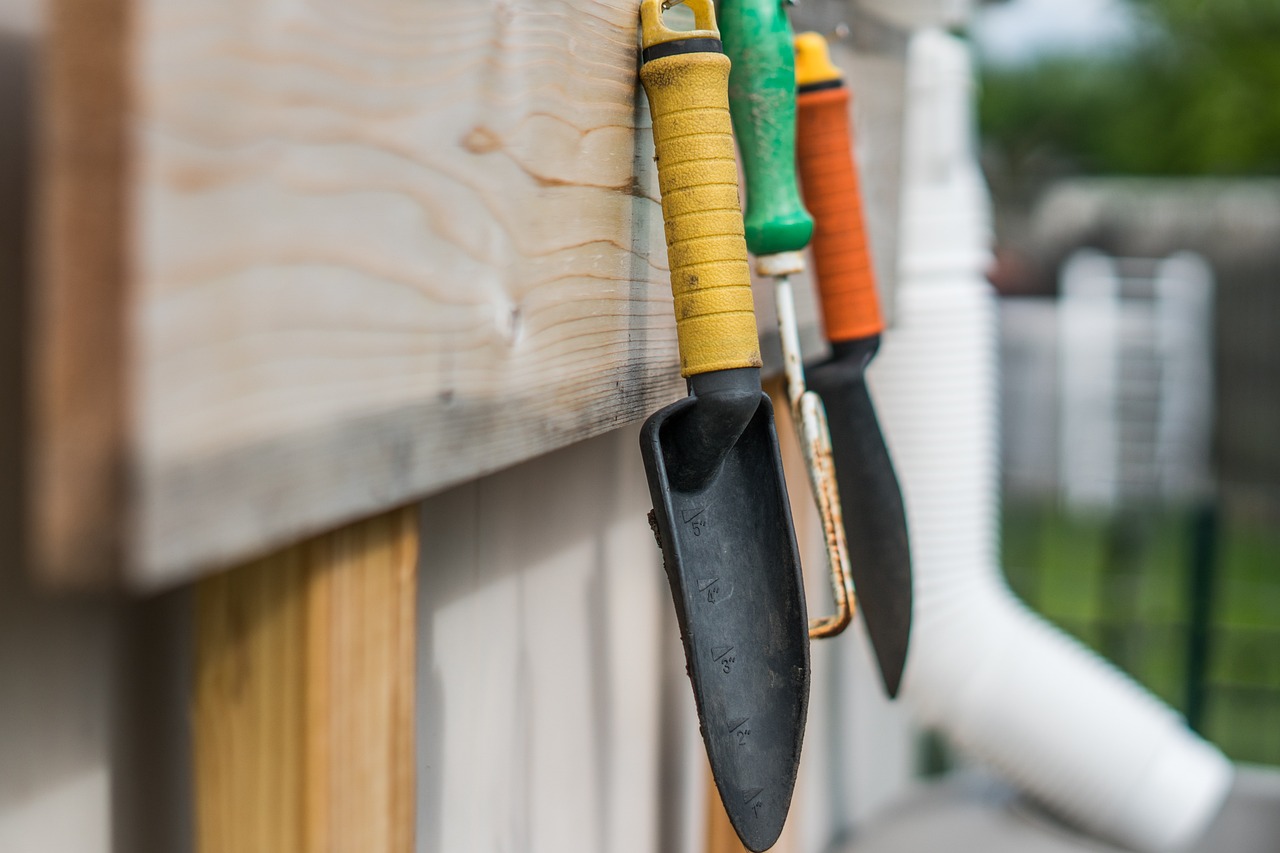Introduction:
Embarking on your indoor gardening journey is an exciting process, but knowing where to start can be daunting, especially when it comes to selecting the right tools. Fear not! In this post, we’ll take a look at the essential indoor gardening tools that will equip you for success from day one. Whether you’re nurturing herbs on your kitchen windowsill or creating a lush oasis in your living room, these indispensable tools will be your trusted companions every step of the way.
1 Hand Trowel
A hand trowel is an indispensable tool in any gardener’s toolbox, revered for its versatility and practicality. Designed with a narrow, scoop-shaped blade attached to a sturdy handle, the hand trowel’s primary function is for digging small holes, transplanting seedlings and plants, and scooping soil with precision and ease.
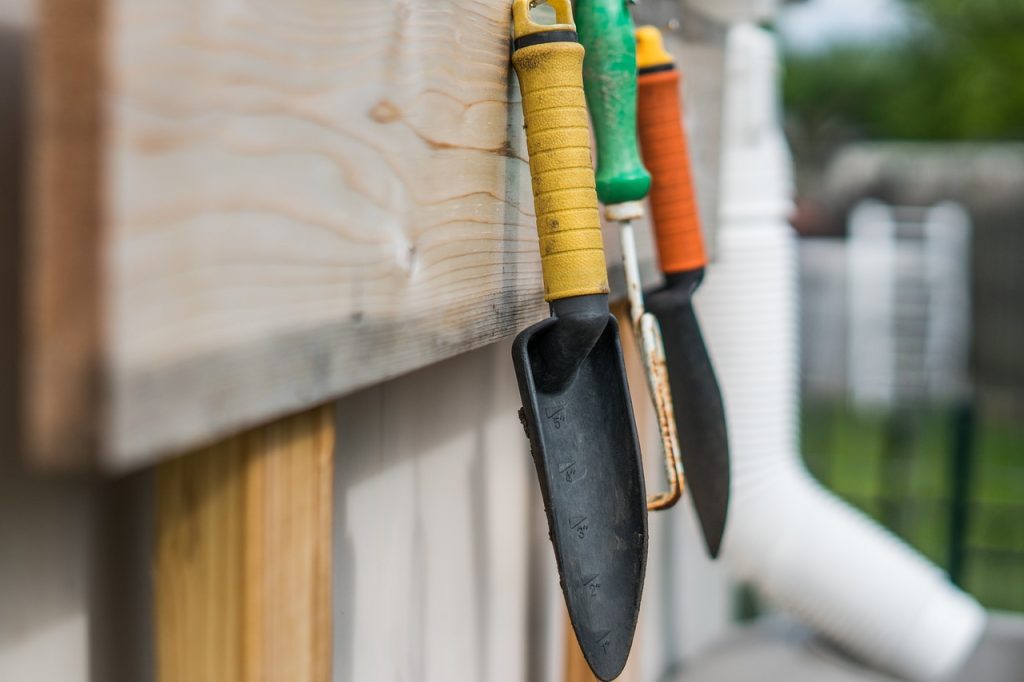
A robust hand trowel should feature a durable, rust-resistant blade crafted from high-quality materials such as stainless steel, ensuring longevity and reliable performance. Additionally, the handle of the hand trowel should be ergonomically designed for comfort, providing a secure grip and minimizing hand fatigue during extended use. A good hand trowel should provide years of service both indoors and outdoors.
2 Secateurs / Pruning Shears
Secateurs, also known as pruning shears or hand pruners, are indispensable tools for maintaining the health and appearance of indoor plants through precise pruning and trimming. These specialized cutting tools are designed with sharp, bypass blades that effortlessly slice through stems, branches, and foliage with precision and ease.
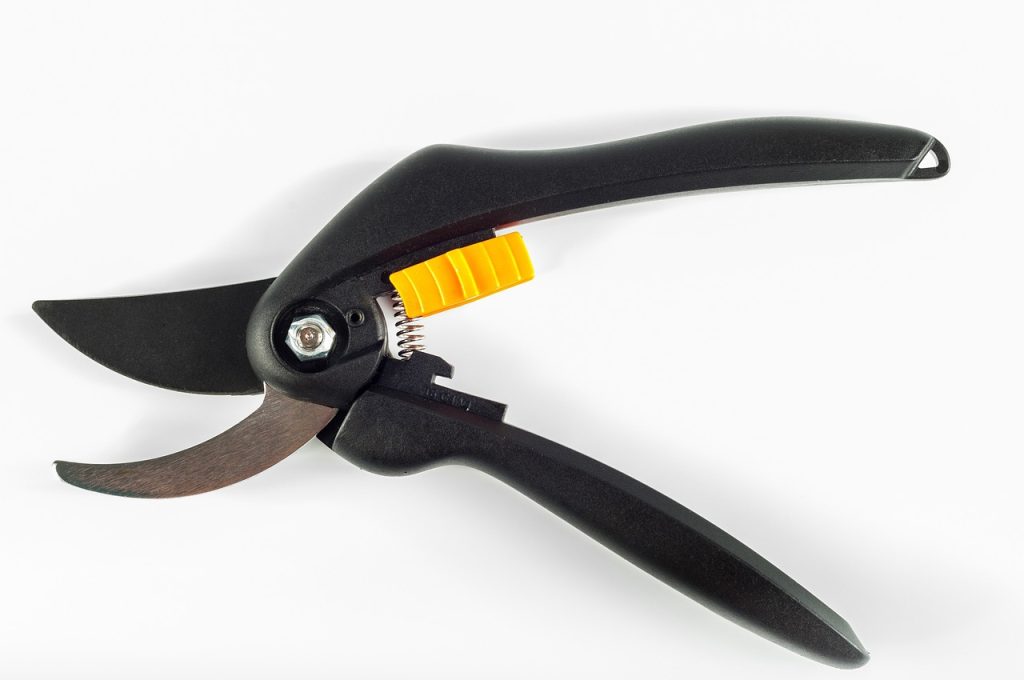
The primary purpose of secateurs is to remove dead, diseased, or overgrown plant parts to promote healthy growth and maintain the desired shape and size of the plant. When selecting secateurs, it’s essential to prioritize durability and comfort. A robust pair of secateurs should feature blades made from high-quality, hardened steel for long-lasting sharpness and resistance to corrosion. Additionally, the handles should be ergonomically designed with a comfortable grip, allowing for extended use without hand fatigue or strain.
Look for secateurs with cushioned or non-slip handles to enhance comfort and control, enabling precise cuts while reducing the risk of accidents or hand injuries. With their combination of strength, precision, and ergonomic design, a reliable pair of secateurs is an essential tool for any indoor gardener.
3 Indoor Watering Can
An indoor watering can is an essential tool to ensure your plant babies don’t go thirsty, providing controlled and precise watering. Unlike larger outdoor watering cans, indoor watering cans are designed with a compact size and a slender, elongated spout, allowing for targeted and accurate watering in confined spaces.

The primary purpose of an indoor watering can is to deliver water directly to the base of plants without splashing or flooding surrounding areas. When selecting an indoor watering can, it’s crucial to consider features that enhance functionality and ease of use. Look for a can with a long, narrow spout for precise pouring, enabling you to reach beneath foliage and into tight spaces with ease. Additionally, your indoor watering can should be well-balanced and have a comfortable handle for effortless carrying and pouring. Some indoor watering cans also feature a removable rose attachment on the spout, allowing you to adjust the water flow from a gentle sprinkle to a steady stream according to the needs of your plants.
4 Plant Mister / Sprayer
A plant mister, also known as a spray bottle or atomizer, is used to maintain optimal humidity levels and promoting healthy growth in indoor plants. Its primary purpose is to deliver a fine mist of water to the foliage of plants, mimicking the gentle rain showers that plants would receive in their natural habitat. This helps to hydrate the leaves, clean away dust and debris, and increase humidity around the plant, particularly beneficial for species that thrive in humid environments. It helps counteract the dry atmosphere normally found in centrally heated apartments and houses.
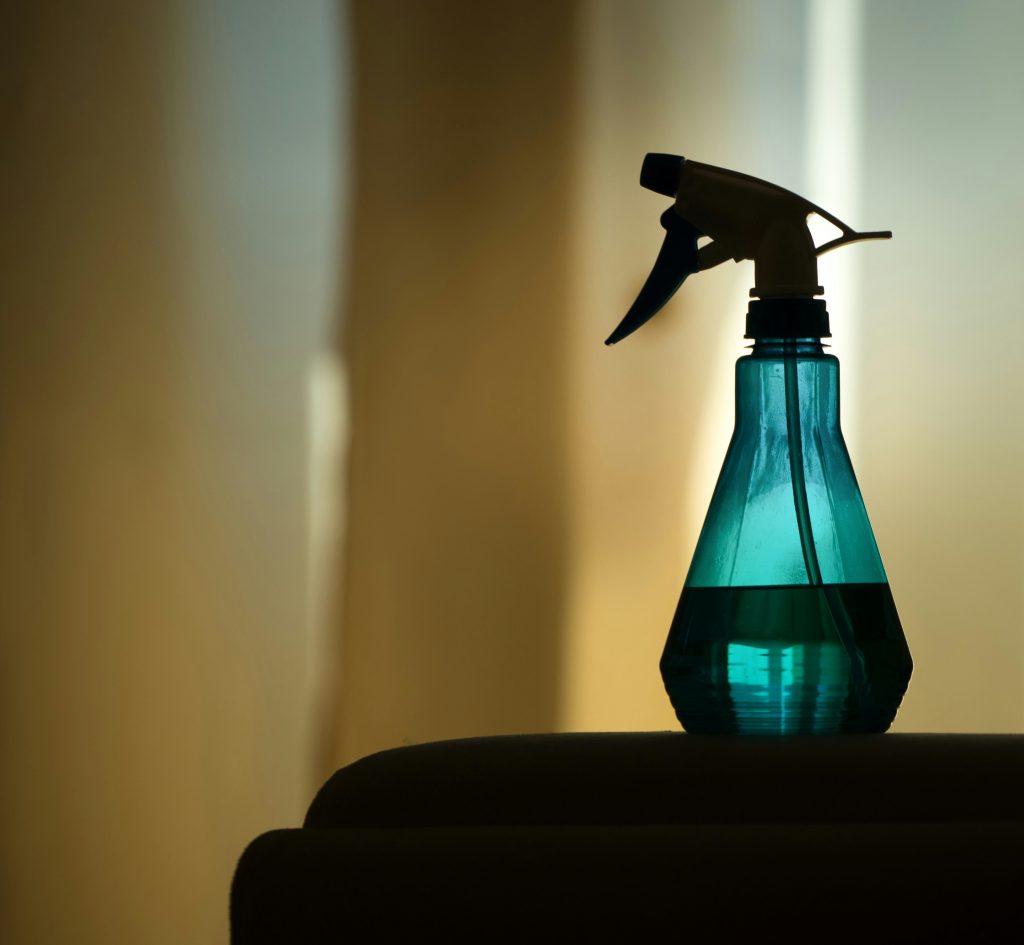
When selecting a plant mister, it’s important to consider features that enhance functionality and ease of use. Look for a mister with a durable plastic or glass bottle that can hold an ample amount of water without leaking or becoming too heavy to handle. Additionally, the nozzle should produce a fine, even spray pattern, ensuring thorough coverage and minimizing the risk of water droplets damaging delicate foliage. Some misters also come with adjustable settings, allowing you to control the intensity of the mist according to the needs of your plants.
5 Soil Moisture Meter
OK, I’ll agree that some people might not consider this to be ‘essential’ but I have found a soil moisture meter to be very useful and it certainly takes the guesswork out of watering, especially when you are new to indoor gardening.
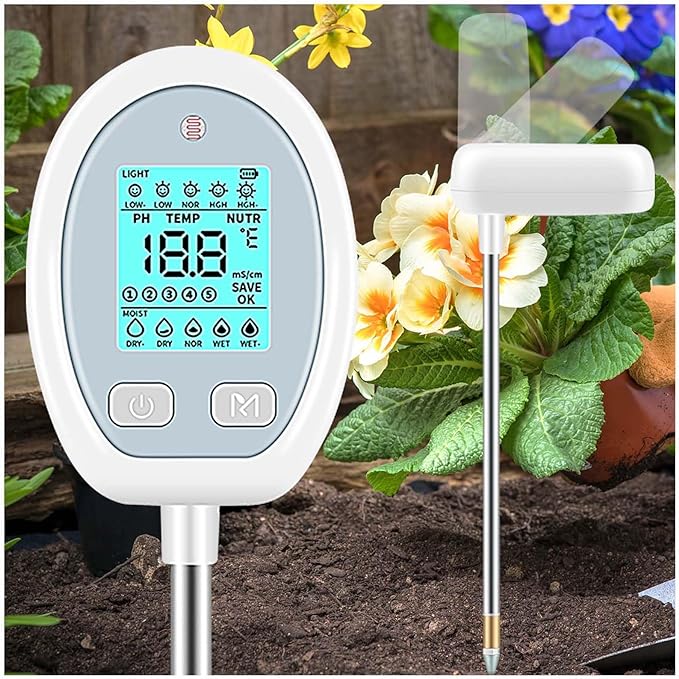
A soil moisture meter provides accurate and reliable information about the moisture levels in the soil. Its primary purpose is to help gardeners determine when to water their plants so that the plants are not stressed by lack of water nor are they saturated and liable to rot.
By inserting the probe into the soil at various depths around the root zone of the plant, the meter provides instant feedback on whether the soil is dry, moist, or saturated. This allows gardeners to avoid overwatering, which can lead to root rot and other moisture-related issues, as well as underwatering, which can cause stress and dehydration in plants.
Choose a meter with a clear and easy-to-read display that indicates the moisture level in the soil, ensuring quick and convenient interpretation of the results. Some meters also come with additional features, such as built-in temperature sensors or pH meters, which provide even more valuable information for plant care.
6 Minimum – Maximum Thermometer
Indoor plants have a range of temperatures within which they will thrive. They will also have temperatures which they might tolerate but under which they will not perform so well. And there will be temperatures which will prove fatal, often very rapidly. It is therefore essential that you know a) the temperature range for your plants and b) the temperature of the environment in which you are growing the plants. An accurate record of the highest and lowest temperatures is extremely useful: you may not realise how cold a room becomes overnight when it is not in use, or how hot a windowsill becomes when it is in full sun during the summer.

By tracking the highest and lowest temperatures in the indoor environment, you can identify potential issues such as temperature spikes near heating vents or drafts near windows. This information enables you to take proactive measures to regulate temperature, such as adjusting heating or cooling systems, relocating plants away from sources of temperature extremes, or implementing additional insulation.
Traditional Min-Max thermometers measured temperatures by the expansion and contraction of specific liquids such as alcohol or mercury, while digital thermometers use electronics. The latter have the advantage of more precision and easier to read displays, while the traditional thermometers may be more robust especially in harsh environments. Digital thermometers may also display additional information such as time and relative humidity.
